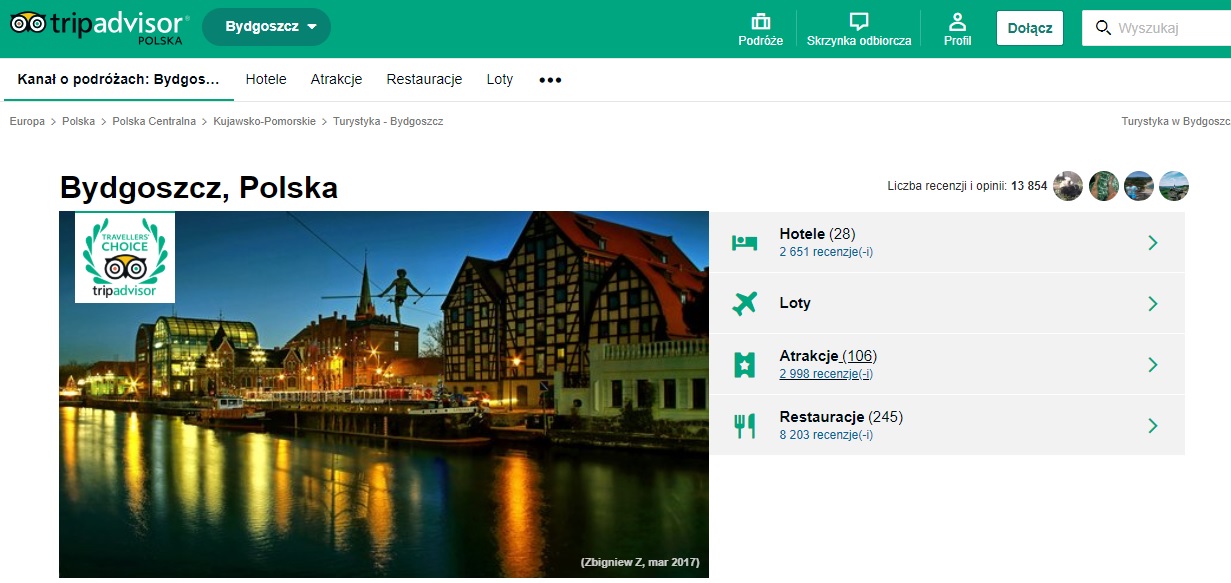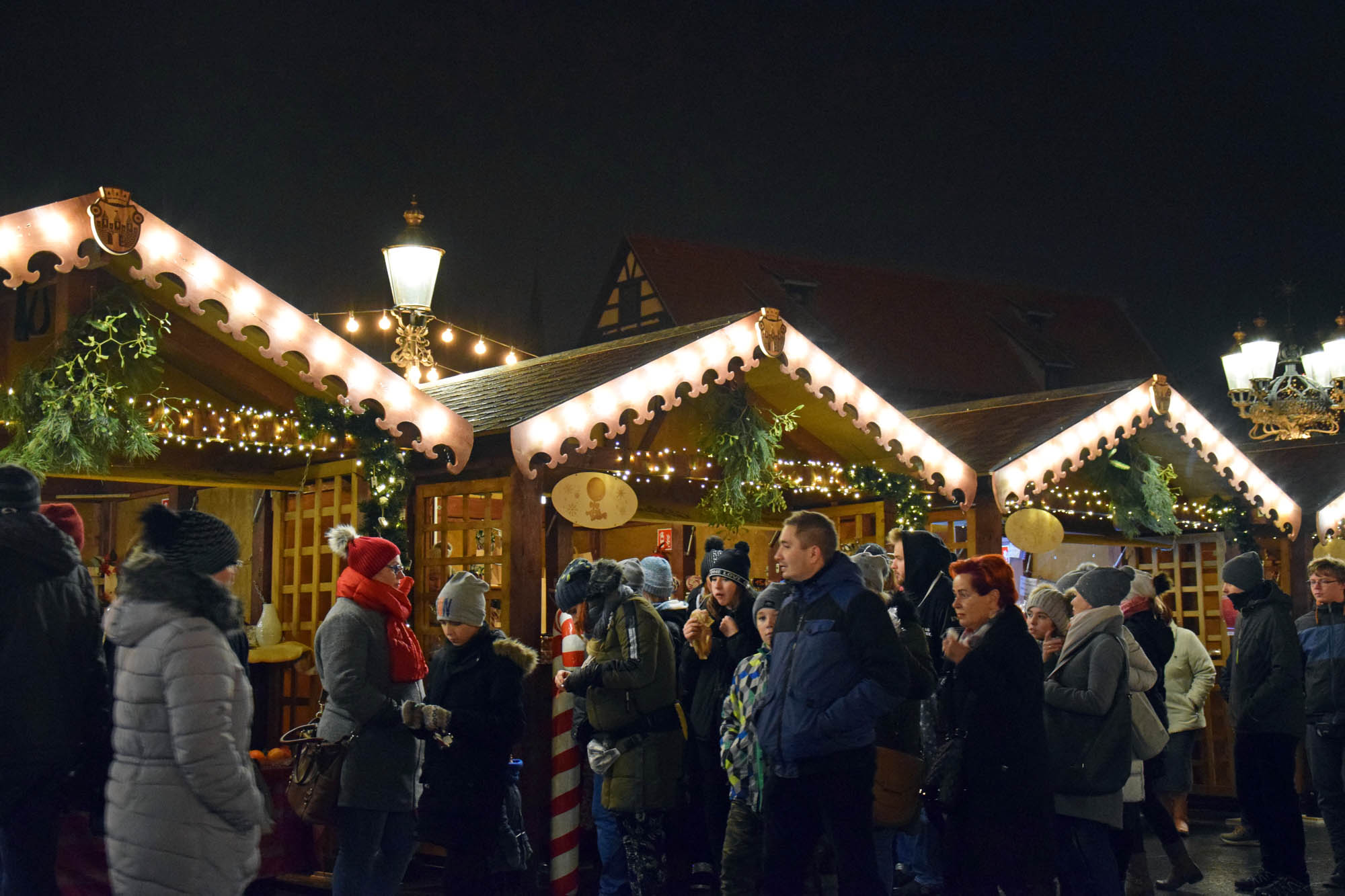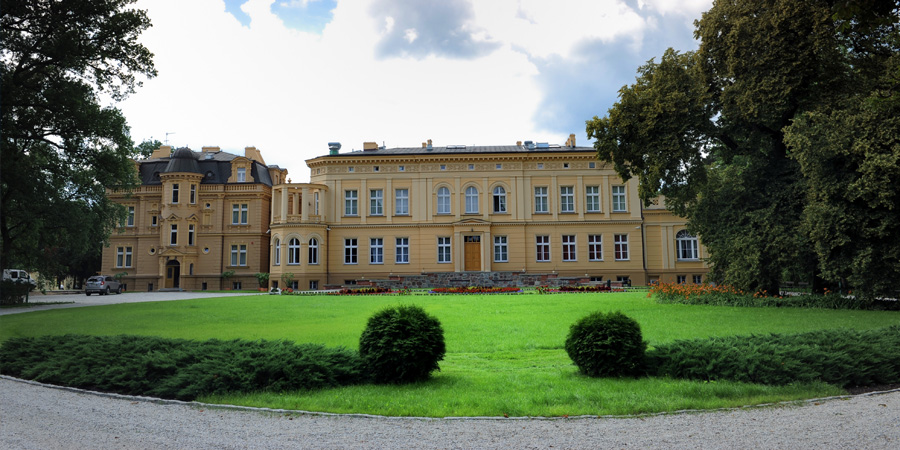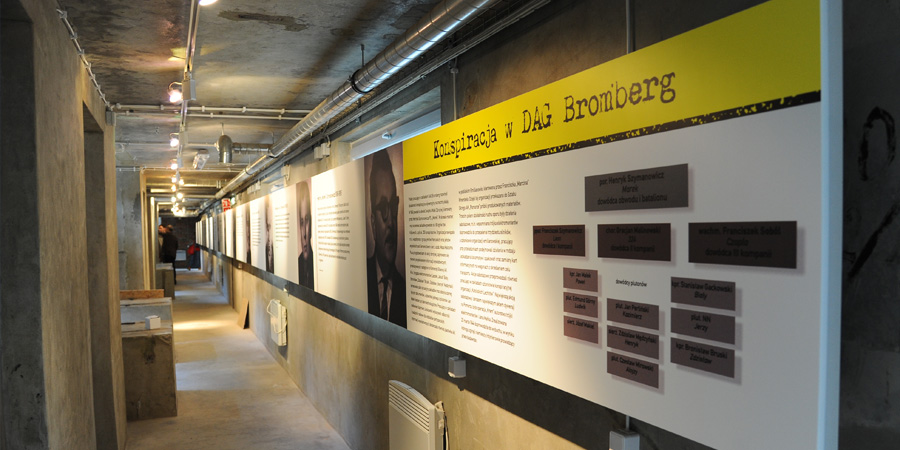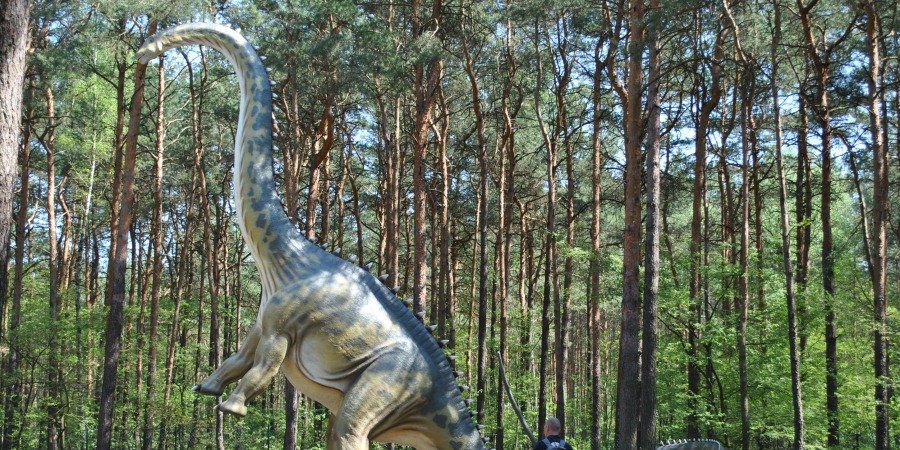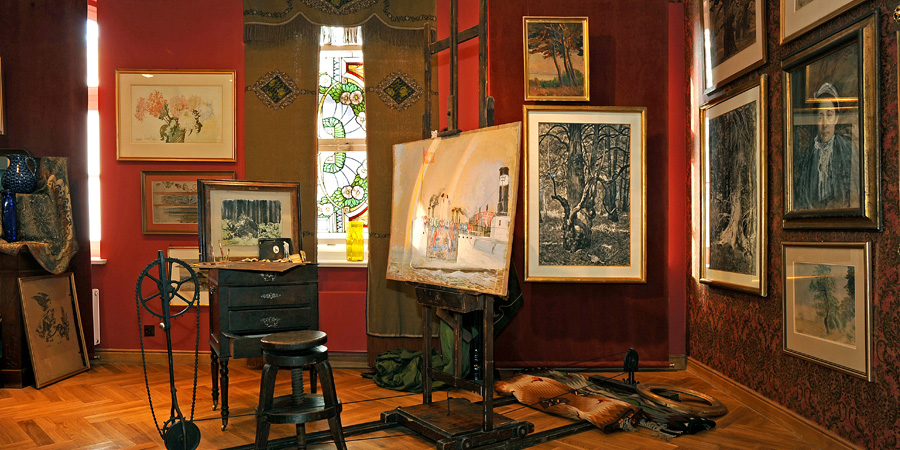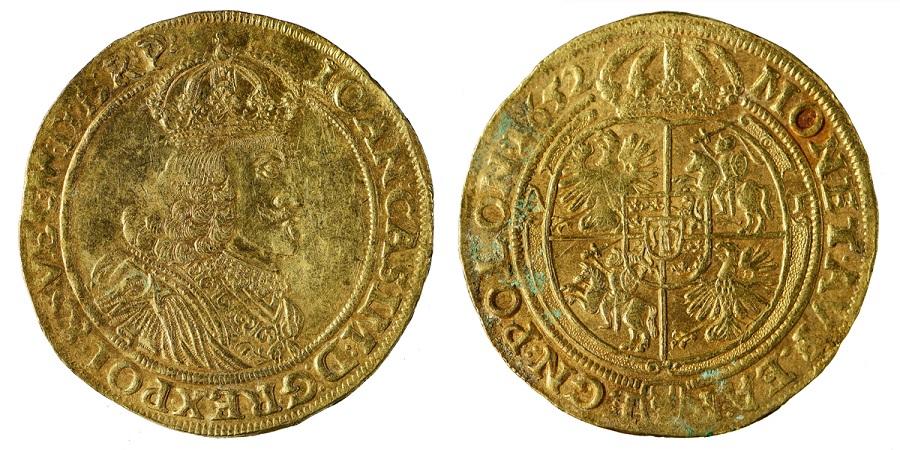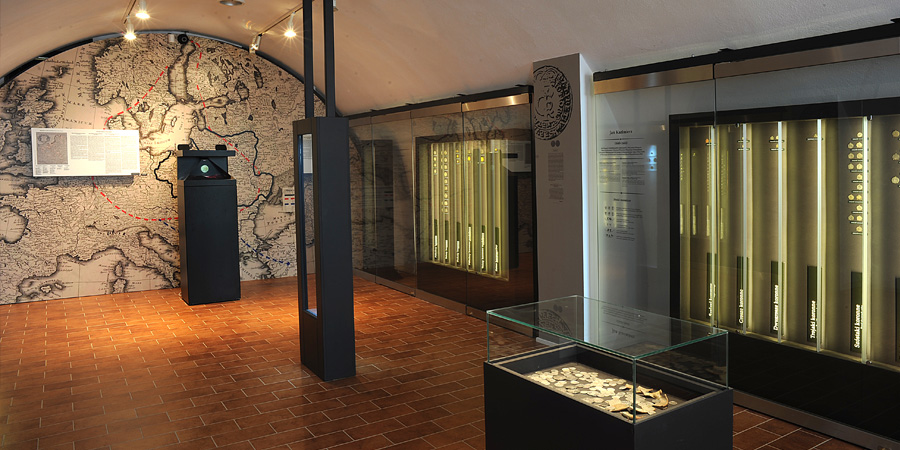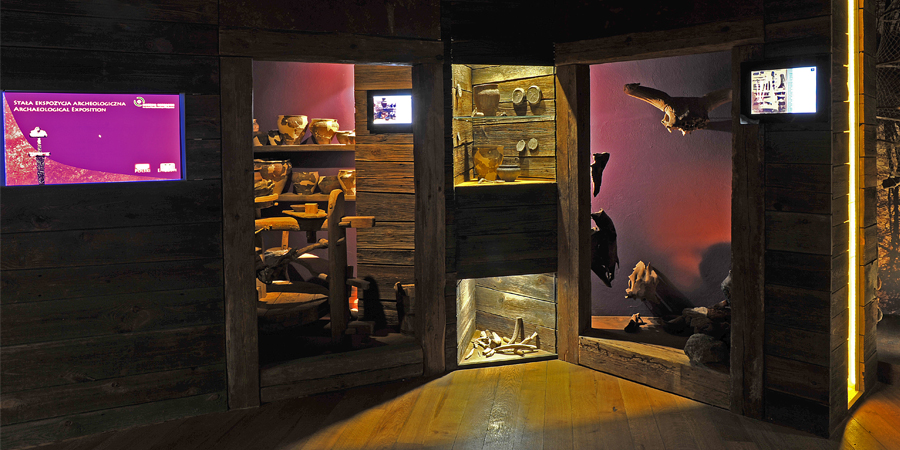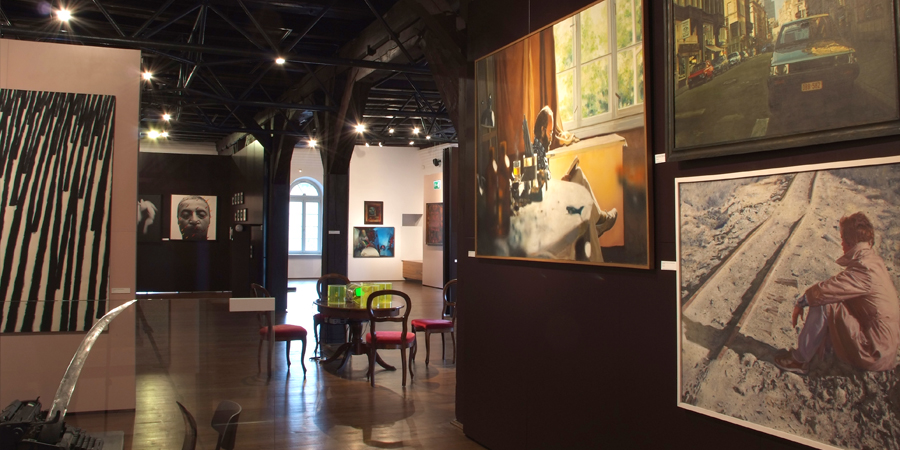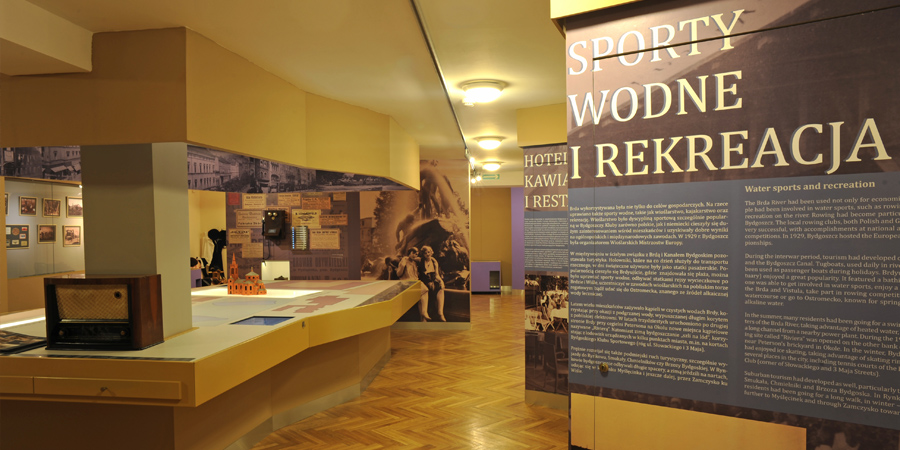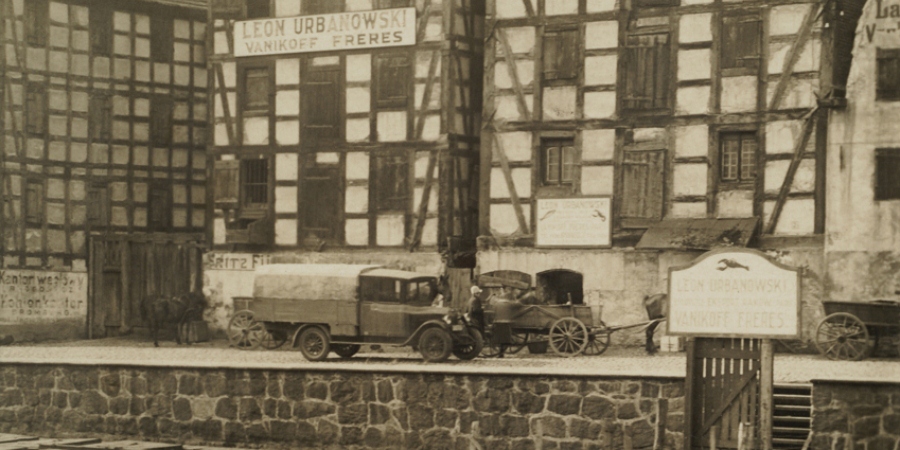The exhibition “In the borderland between Wielkopolska and Pomerania” is a permanent exhibition, showing the earliest history of our region, from the beginning of settlement until the period of migration of the nations. No city, area or country has a history that runs its course independently. It has always been part of events of a broader range. Due to the fact that Bydgoszcz and its environs are located in the meeting point of two large geographical regions – Wielkopolska and Pomerania – we will strive to show prehistory of this area in detailed chronology.
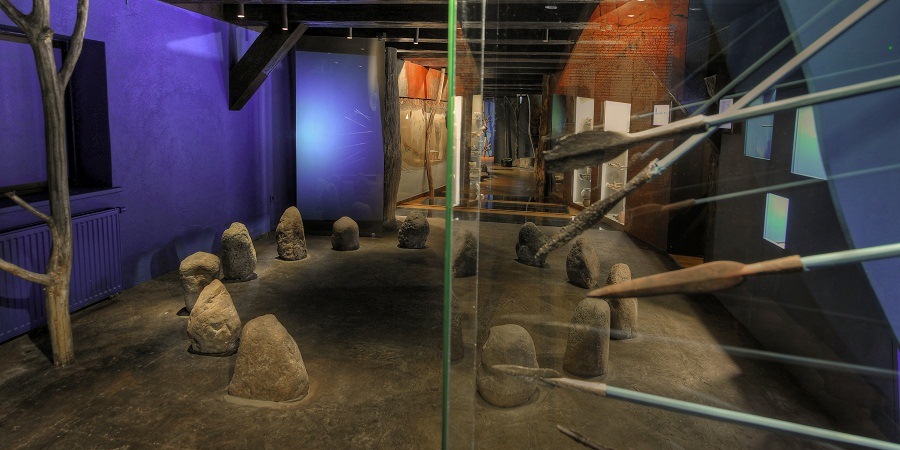 Presented artifacts will be coming from the regions of Krajna, Kuyavia and Pałuki, and the majority of them are in the collection of the Leon Wyczółkowski Regional Museum in Bydgoszcz. Due to the fact that the main – and for the oldest epochs, the only – source of information for learning the past is material heritage, we will show changes taking place in human life through presentation of various tools, decorations, weaponry, and everyday articles. It will allow us to trace back technological transitions (raw material and production method) and evolution of human thought, which gradually aimed at taming the environment and improvement of quality of life. We will also present impact of European nations on these areas, which accomplishments had influence on the change of cultural and political image of Europe, such as the Celts and Germanic peoples. Their presence is also recorded in the neighboring areas; thus, we can confirm that the history of this region intertwined with European civilization already in the ancient times. Artifacts and numerous reconstructions will be presented over various epochs and prehistoric periods; in justified cases, we will introduce the strictly archeological term “culture.” Several key exhibits will be presented for every period, around which the remaining parts of the exhibition will be organized, showing the most important aspects of a given epoch. In order to go on this “unique time travel,” the organizers plan to install modern forms of media, allowing the visitor to actively participate in touring the exhibition and broaden knowledge in any field of interest. Through various forms of modern expression, such as multimedia presentations on many topics, film, virtual walk and computer animations, we will be able to provide to visitors comfort in acceptance of messages and create an opportunity for active participation in a visit. Interesting visual arrangement, using the paratheatrical concept, featuring a range of materials, reminding the ones used in ancient times such as wood, stone and a number of reconstructions (e.g. shelter, stone circle, cist grave) will recreate the atmosphere of that times, impacting the senses of visitors. Modern, electronic multimedia will be used for this purpose as well, such as cameras, projectors, multimedia kiosks, and interactive floor. They will be used in a virtual dressing room, magic spring, virtual sandbox – excavation, and time machine. In addition, a direct contact with a real artifact will be possible as well. By making replicas of a weaving workshop, prehistoric drilling machine, quern-stone, there will be an opportunity for interaction with objects, which is most often used by students and families with children, noticed in our activity to date. It will be possible to use and touch the old equipment, which is particularly important for the blind and vision impaired, offered to a certain extent in our exhibition. In order to preserve the atmosphere of the ancient times, we plan to not use the traditional captions and charts. This information will be placed on digital frames, which will not disturb the created atmosphere. In addition, frames can be provided with sound according to presented topics and extended captions related to a given subject, making them irreplaceable, interactive exhibition guides. Our intention is to create an exhibition, in which centuries-old archeological artifacts, provided with narration, will be “revived” by modern multimedia. Through the forms mentioned above, we will try to bring closer the atmosphere of those times and shape, through visual media, a new way of reception of archeological heritage.
Presented artifacts will be coming from the regions of Krajna, Kuyavia and Pałuki, and the majority of them are in the collection of the Leon Wyczółkowski Regional Museum in Bydgoszcz. Due to the fact that the main – and for the oldest epochs, the only – source of information for learning the past is material heritage, we will show changes taking place in human life through presentation of various tools, decorations, weaponry, and everyday articles. It will allow us to trace back technological transitions (raw material and production method) and evolution of human thought, which gradually aimed at taming the environment and improvement of quality of life. We will also present impact of European nations on these areas, which accomplishments had influence on the change of cultural and political image of Europe, such as the Celts and Germanic peoples. Their presence is also recorded in the neighboring areas; thus, we can confirm that the history of this region intertwined with European civilization already in the ancient times. Artifacts and numerous reconstructions will be presented over various epochs and prehistoric periods; in justified cases, we will introduce the strictly archeological term “culture.” Several key exhibits will be presented for every period, around which the remaining parts of the exhibition will be organized, showing the most important aspects of a given epoch. In order to go on this “unique time travel,” the organizers plan to install modern forms of media, allowing the visitor to actively participate in touring the exhibition and broaden knowledge in any field of interest. Through various forms of modern expression, such as multimedia presentations on many topics, film, virtual walk and computer animations, we will be able to provide to visitors comfort in acceptance of messages and create an opportunity for active participation in a visit. Interesting visual arrangement, using the paratheatrical concept, featuring a range of materials, reminding the ones used in ancient times such as wood, stone and a number of reconstructions (e.g. shelter, stone circle, cist grave) will recreate the atmosphere of that times, impacting the senses of visitors. Modern, electronic multimedia will be used for this purpose as well, such as cameras, projectors, multimedia kiosks, and interactive floor. They will be used in a virtual dressing room, magic spring, virtual sandbox – excavation, and time machine. In addition, a direct contact with a real artifact will be possible as well. By making replicas of a weaving workshop, prehistoric drilling machine, quern-stone, there will be an opportunity for interaction with objects, which is most often used by students and families with children, noticed in our activity to date. It will be possible to use and touch the old equipment, which is particularly important for the blind and vision impaired, offered to a certain extent in our exhibition. In order to preserve the atmosphere of the ancient times, we plan to not use the traditional captions and charts. This information will be placed on digital frames, which will not disturb the created atmosphere. In addition, frames can be provided with sound according to presented topics and extended captions related to a given subject, making them irreplaceable, interactive exhibition guides. Our intention is to create an exhibition, in which centuries-old archeological artifacts, provided with narration, will be “revived” by modern multimedia. Through the forms mentioned above, we will try to bring closer the atmosphere of those times and shape, through visual media, a new way of reception of archeological heritage.
| Author: Józef Łoś, Jolanta Szałkowska-Łoś | |
| Location of the exhibition: Archaeological Collections – 2 Mennica Street on the Mill Island | |
| Permanent exhibition | |








